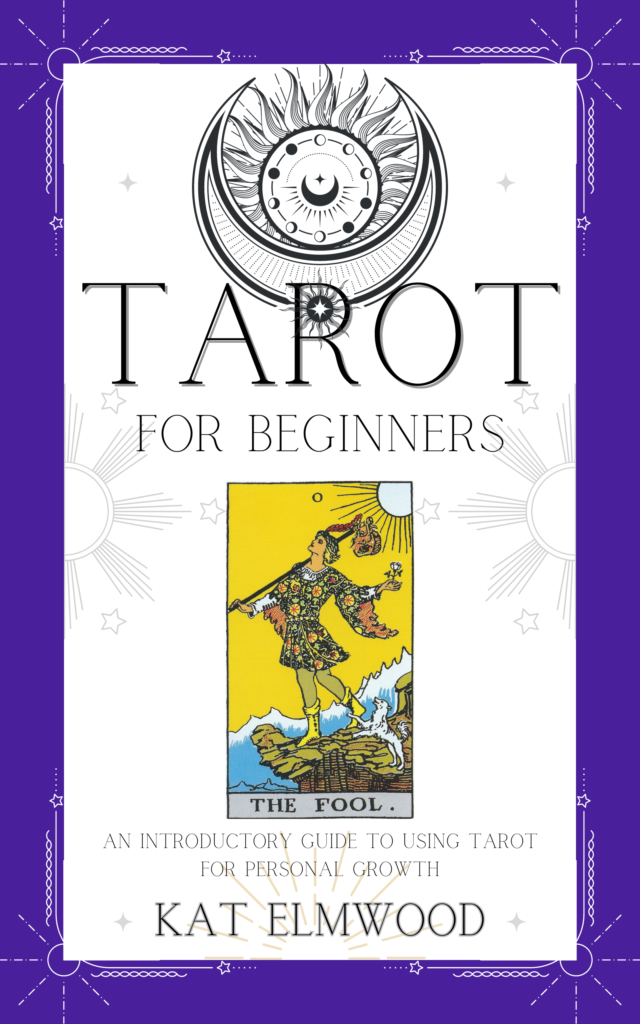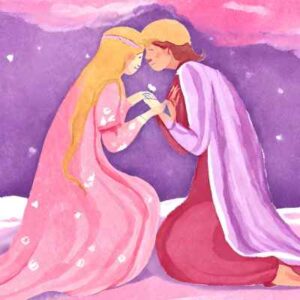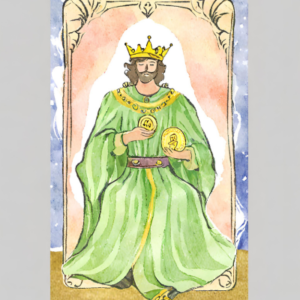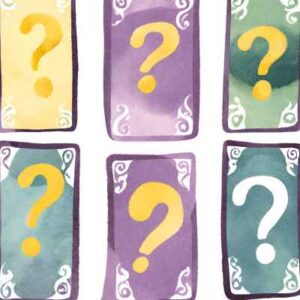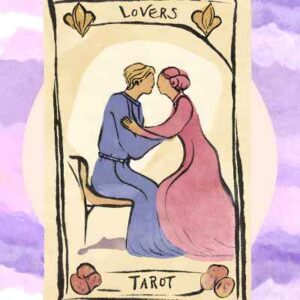Tarot For Beginners – Glossary
The following tarot glossary has been reprinted from Tarot For Beginners by Kat Elmwood.
Tarot cards are a rich language in themselves, and the tarot community also talks about the practice in certain ways. This glossary provides a foundational understanding of tarot’s essential elements. Some terms may be self-explanatory, others entirely new. Use this list as a quick, easy access guide.
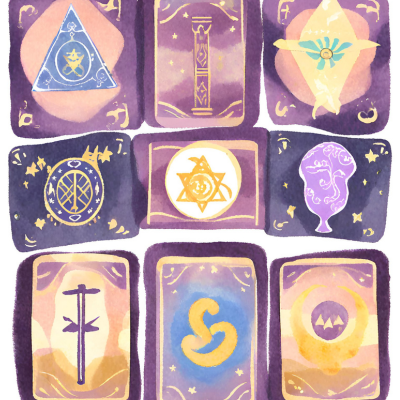
Arcana
The term “arcana” means secrets or mysteries. Tarot decks traditionally contain two Arcana: Major and Minor.
Clarifier Card
An optional card drawn during a reading to provide further insights into specific issues, or to deepen understanding of existing cards in the spread.
Court Cards
Found in the Minor Arcana, these cards—Page, Knight, Queen, and King—represent various personality types or archetypes at different stages of learning. Court cards may indicate specific individuals or aspects of an individual’s personality.
Deck
A collection of tarot cards unified by a theme, artistic style, or other cohesive elements. Modern decks typically have seventy-eight cards, drawing inspiration from the iconic Rider-Waite-Smith deck. Many individuals select decks that resonate with their personality and interests.
Intuitive Reading
The personal interpretations of a card’s meaning, drawn from the reader’s life experiences and intuition. Intuitive readings consider the card’s imagery, position in the spread, and the reader’s innate reaction to any card.
Major Arcana
Made up of twenty-two cards (numbered 0-21), the Major Arcana symbolizes significant life moments, fate, major personality traits, and existential themes. Each card follows a narrative akin to the hero’s journey, beginning with the innocent Fool (0), navigating through various strengths and trials, and emerging as a wiser individual in the World (21).
Minor Arcana
Representing day-to-day events, emotions, and less profound situations, the Minor Arcana consists of four suits: Cups, Swords, Pentacles, and Wands. Each suit embodies distinct themes and contains thirteen cards, including Court cards (Page, Knight, Queen, King) and numbered cards (Ace through Ten). Different decks may call their Minor suits by different names.
Pip Cards
Simple symbolic representations lacking elaborate artwork, akin to the designs in a standard deck of playing cards.
Querent
The individual for whom a tarot reading is conducted. When reading for oneself, the reader assumes both roles: reader and querent. When reading for others, the person receiving the reading is the querent.
Reversals
The orientation of a card—upright or reversed—can alter its meaning. While some readers focus solely on upright interpretations, others explore the shadowy nuances offered by reversed cards, perceiving them as negative or indicative of blocked energies. Many tarot practitioners look at reversals as messages from the shadow self.
Rider-Waite-Smith (RWS) Deck
First published in 1909, the Rider-Waite-Smith tarot deck is the standard from which most modern decks draw upon. The name of the deck is derived from the publisher, The Rider Company, and the author, A.E. Waite, who set out his intentions for the deck design and wrote the original explanatory guidebook. For many years, Pamela Coleman Smith, the artist responsible for the now iconic imagery, went largely uncredited. Indeed, it is most common to see this deck referred to as simply the Rider-Waite deck. More and more in the tarot community are now rightly exploring and acknowledging Smith’s vital contribution and thereby rename the deck the Rider-Waite-Smith deck.
Significator
A card chosen to represent the querent at the time of the reading. While typically a deliberate selection, it can also be selected randomly. Drawing a Significator card is not mandatory unless specified by the spread.
Spreads
Patterns in which cards are laid out during a reading, with each position conveying specific meanings. Many tarot readers begin with traditional spreads and develop their own over time.
Suits
The four divisions of the Minor Arcana—Wands, Cups, Swords, and Pentacles—each with its unique themes and symbolism. The suits equate to the suits of regular playing cards: clubs, hearts, spades, and diamonds.
Traditional Meaning
Each tarot card carries a conventional interpretation, often reflected symbolically in its artwork.

